The Ultimate Guide to Olive Skin Tone: Are You One of Us?

Key Takeaways
- Recognize olive undertones by a slight green or neutral-green cast that remains the same throughout the year. Double check in natural light and rely on more than the vein test to keep yourself from falling into the 'yellow' category.
- Anticipate foundation head-scratchers, seek out genuine olive or neutral-green undertones. Try shades out in natural light, and stay away from pink, orange or ashy formulas.
- Create a versatile color wardrobe of jewel tones, earthy hues and grounded neutrals. Keep metals soft antique gold, rose gold or brushed silver and test bright or neon shades before taking the plunge.
- Personalize makeup to complement, not conceal, the olive tone. Opt for muted rose, terracotta, warm berry blush, golden-olive bronzers and brick, berry, mauve, or deep plum lip colors.
- Treat skin with mild exfoliation, illuminating actives, and at least SPF 30 every day. Combat hyperpigmentation and uneven tone by sticking to your routine and doing daylight checks for real wear results.
- Celebrate the range from fair to dark olive on numerous canvases, and promote diverse programming that portrays it. Post your top olive-friendly swatches and favorites to guide others through olive-specific selections.
🎨 Discover Your Personal Color Palette
Ready to discover your perfect color palette? Use our expert analysis to identify the colors that make you look and feel your absolute best. From skin undertones to feature matching, find your ideal color combinations.
Find Your Color Palette →Olive skin tone denotes various medium shades with neutral-to-warm undertones and a faint greenish hue. Prevalent around the Mediterranean, Middle East, South Asia and Latin America, it typically tans well and can appear less red.
To pair products, observe how your skin moves in the sun, and sample shades in natural light. For skin, stick with broad-spectrum SPF, gentle exfoliation and balanced hydration.
The following pages outline undertones, shade matches, and regimen advice.
📚 Recent Articles
What is olive skin tone?
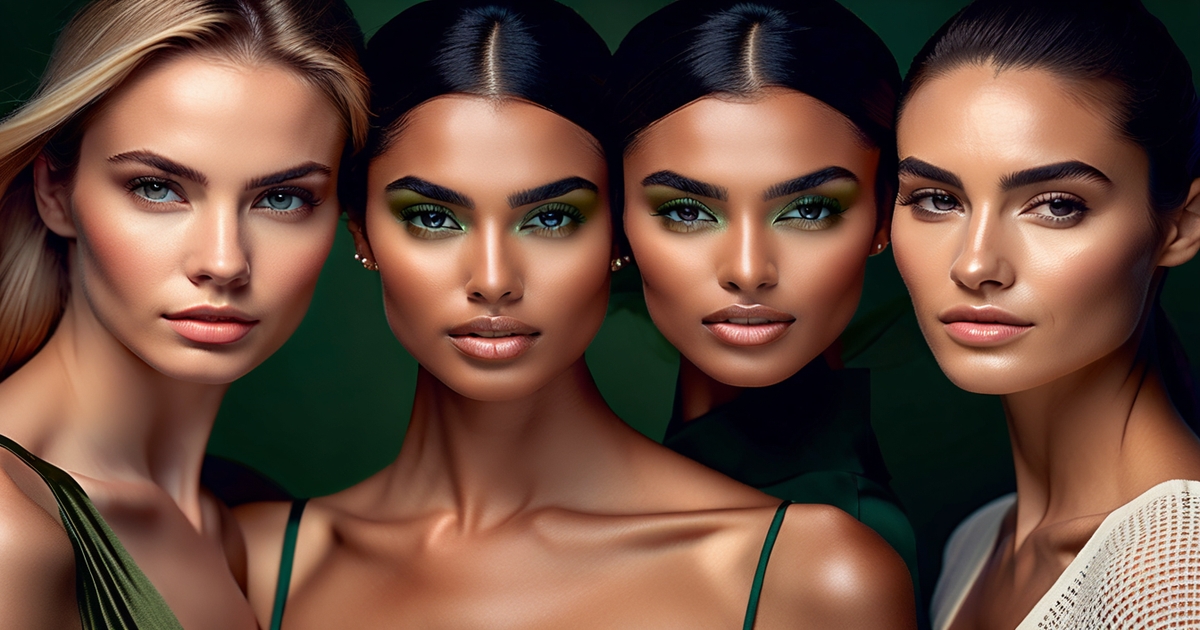
A complexion with a subtle greenish or yellowish base, that muted cast that looks earthy rather than rosy or golden. It can be a prevailing green or yellow tone, and spans light, medium and deep depths, although most individuals encounter it in the medium spectrum.
The undertone itself is neutral-green, distinguishing it from classic warm, cool or straight neutral skin. That's why so many foundations read to pink, orange, or weird gray on olive skin. Olive skin looks greenish; next to one another, it's global and multi-racial.
When it comes to the Fitzpatrick scale, olive skin ranges anywhere from III to V, which translates to tanning easily and burning less, but burning just the same.
1. The green cast
In natural daylight, olive skin may possess a subtle green or gray veil, like the soft hue of an unripe olive, particularly along the jawline or near the mouth. That subtle green undertone tends to throw off regular warm or cool based foundations, causing warm tones to appear orange and cool ones to appear pink or ashy.
The green undertone is the distinctive characteristic that distinguishes olive from other neutrals. Not beige, not peach, but subdued green. Take that green tinge as a primary marker. If foundation keeps going peach, try neutral-olive or olive-specific shades.
2. Undertone complexity
Olive undertones mix neutral, yellow, and green pigments, providing a base that can appear even yet muted. That's why olive skin is neutral — with both warm and cool notes without fully tipping either direction.
When makeup misfires, olive skin can date sallow or ashen. A yellow-heavy shade might appear mustard. A pink-heavy shade can appear chalky. A more common match tends to be in the neutral-olive spectrums from light olive to deep olive.
Olive undertones are deceptive and can be confused with warm or cool. Your skin tans like a dream, colors like rust or emerald will sing and silver jewelry can be just as stunning as gold. The undertone remains olive beneath.
Sun, acids, or brightening treatments alter surface tone, but undertone never changes.
3. The vein test
For olive skin, the traditional vein test is frequently muddled. Veins appear blue in places and green in others, providing no definitive response. Don't count on it exclusively! Match it with your skin's response to foundation, clothing colors or jewelry.
Those combo vein colors reflect olive's pigment mix. It's okay. Try extra checks: gold and silver both flatter, true-reds may look sharp, and yellow-heavy beige can appear off.
4. Sun reaction
Olive skin typically tans quickly and burns less, due to its elevated melanin content, corresponding with Fitzpatrick III–V. This deep tan can confuse people into calling it warm-toned. The surface darkens, but the olive undertone remains.
Even at the height of tan, the base is neutral-green and not red or golden. Use sun response as a hint, not the dictator. Mix in the green cast and color matching and you've got it right.
The olive skin spectrum
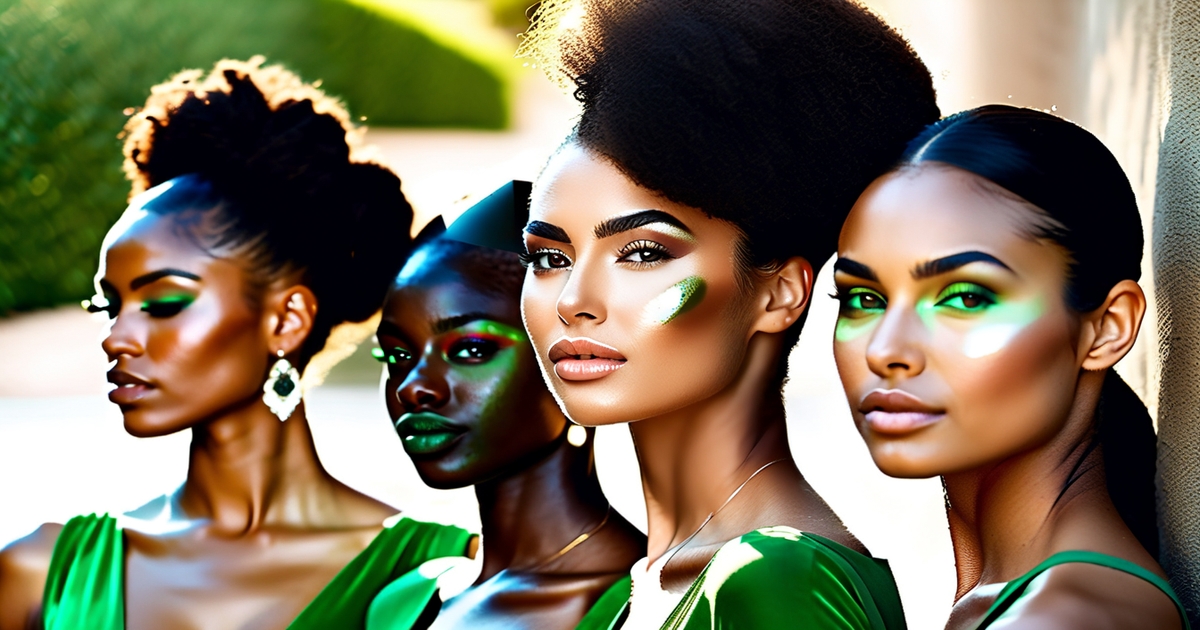
Olive skews from pale to deep, with a common green-leaning undertone that fluctuates in intensity. It's frequently called neutral, but can lean warm or cool. You find it in various areas and intensities—light caramel to dark mocha—because olive is a tone in brown skin, not a color.
On the Fitzpatrick scale, olive treads around III–V. The green cast and pigmentation differ by individual—which is why some complexions read golden and others exhibit a muted, gray-green veil. This spectrum mirrors worldwide diversity—variation in human skin color is greatest in sub-Saharan Africa, and olive undertones are a chapter within that larger narrative.
- Pale olive: light depth, subtle green/gray cast, little surface redness
- True olive: medium depth, clear olive neutrality, balanced yellow–green mix
- Deep olive: medium–dark depth, strong olive cast, high melanin
Pale olive
Pale olive skin tones have a fairly light surface tone with a muted green or gray undertone. While it might tan quickly, it can also appear ashy, complicating shade matching. Many people misinterpret this unique skin tone as fair cool or neutral due to the green cast that mutes pink and minimizes visible redness. Finding the right foundation shade is challenging because there are limited options at light depths that still reflect a true olive undertone. Testing in daylight on your cheek and looking for terms like 'neutral olive' or 'light olive' can help.
Soft, earthy tones in clothing and lip colors, such as moss, taupe, and dusty rose, complement an olive complexion beautifully. You may notice a quick tan and a relaxed, low-flush appearance. The glow is present but muted rather than loud. Opt for warmth with bronzers (avoiding orange) and champagne highlights instead of icy tones to enhance your olive skin tone.
When choosing makeup products, be mindful that pink-based shades can wash out the skin, while too much yellow can create a mustard effect. Therefore, selecting the right shades is crucial for achieving a harmonious look that enhances your natural beauty.
True olive
True olive rests in the perfect middle – mid depth with a clear olive/neutral lean. The undertone can combine yellow and green, so a hasty warm/cool tag often misses. Color analysis matters: swatch several neutrals and olives side by side and check for a seamless blend into the neck.
Earthy, muted tones tend to feel most natural—olive green, terracotta, slate, gentle navy. You find this skin type in a lot of ethnicities – Mediterranean, Middle Eastern, South Asian, Latinx and North African, each with their own undertone nuance.
In makeup, seek out 'medium neutral-olive' bases. Blush in muted peach, tan-rose or brick comes across as natural rather than sassy.
Deep olive
Deep olive is medium-to-dark with a distinct olive undertone and higher melanin — providing more natural UV buffering but still never a substitute for sunscreen. It's all over the world — South Asia, North Africa, the Middle East, Latin America, etc., etc. — because olive is an undertone in many brown skin tones.
The skin can skew warm or cool, some with a golden warmth, others a soft, almost red cool. Improper shades can make the complexion appear gray or ashy. Opt for foundations labeled "deep neutral-olive" or "golden-olive," and swatch along the jaw and chest to ensure you don't end up with mis-match.
Rich, grounded colors—forest, aubergine, espresso, copper—tend to add depth without muting the green cast. Bronzers need to be deep and neutral, and highlighters in warm champagne or bronze add life, not a silver cast.
Best colors for olive skin
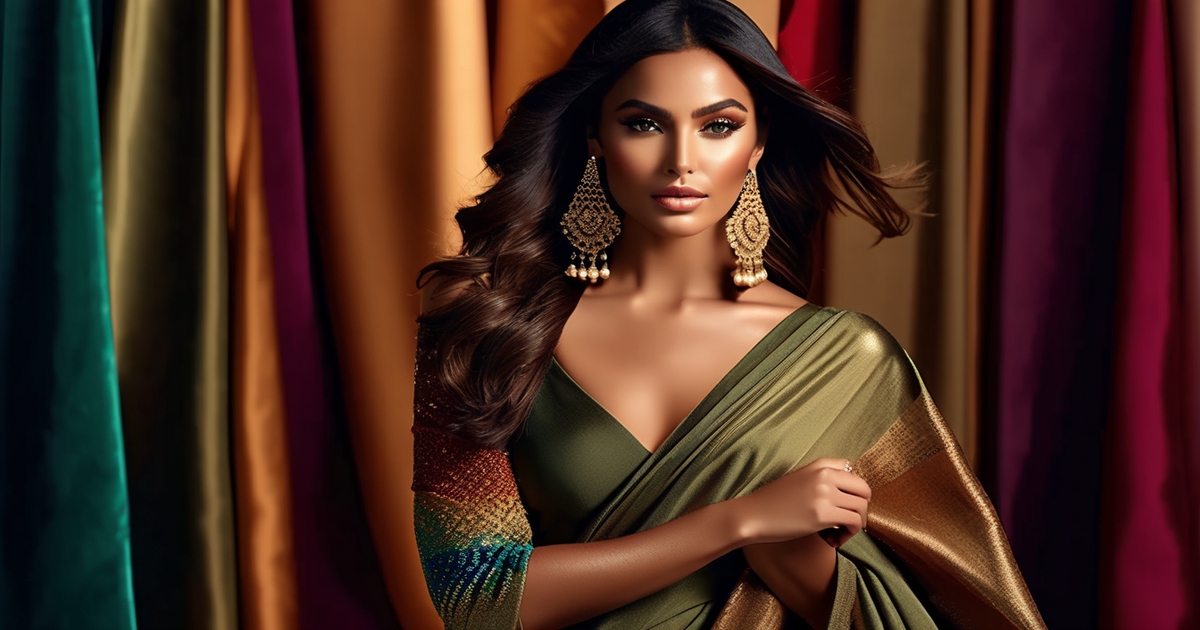
Olive skin has both warm and cool undertones, so color selection is all important. Go for earthy, muted and jewel tones that enhance your glow, and avoid colors that make your skin lean toward yellow or green. Build a small kit: power colors for impact, neutrals for daily wear, and metals to tie it all together.
Apply color theory fundamentals—complement, contrast, and saturation—to inform each selection.
Your power colors
Rich jewel tones provide that clean contrast that invigorates olive undertones. Emerald green, sapphire blue, ruby and royal purple for example, sit opposite the warmth in the skin, so they read bright and clear without turning sallow.
Soft navy is your color when you desire depth without the severity of black. Earthy at its best = warm, but not loud. Terracotta, deep teal, mustard yellow, warm browns, and muted berry mimic sun-baked landscapes and come across as inherent on olive skin.
These hues reflect the skin's warmth without turning yellow. Bold moves pay off when the base is soaked, not fluorescent. Burgundy and magenta add drama and keep the face alive in pictures and dim lighting.
Stay away from rust, pumpkin and hot orange, they can suck out the green or yellow and dissolve the glow. I gravitate to ruby or burgundy lipsticks on olive skin because it strikes a balance of warmth, but instant polish.
- Emerald, sapphire, ruby
- Royal purple, magenta, burgundy
- Deep teal, terracotta, mustard
- Soft navy, muted berry, warm brown
Your neutral palette
Neutrals should ground the style, not sap it. Charcoal gray, taupe, creamy beige and olive-adjacent greens with muted bases make for calm, wearable outfits and eye looks.
Soft browns and tender khaki (not yellow-based) give architectural definition without shine. Avoid bright white and icy pastels — they can make olive skin look washed out. Chilling grays do as well.
Yellow-beige, dull earthy browns and warm greens intensify sallowness. If you adore white, go for off-white or bone.
| Neutral shade | Undertone | Best use |
|---|---|---|
| Charcoal gray | Cool-neutral | Suits, outerwear, eyeliner |
| Taupe | Neutral | Sweaters, eyeshadow base |
| Creamy beige | Warm-neutral | Shirts, knitwear, dresses |
| Soft brown | Warm | Trousers, belts, bronzer |
| Muted khaki (not yellow) | Neutral | Jackets, cargo styles |
| Soft navy | Cool | Blazers, denim, liners |
Neutrals allow soft pinks and blues to read fresh, not saccharine. They play nice with subtle prints — picture soft stripes or delicate florals.
Your best metals
Olive skin rocks metals, but finish counts. Gold and silver both work, antique gold, rose gold and brushed silver, all look sophisticated and less harsh against the skin.
High-shine mirror metals can wash out and emphasize yellows. Use metal tone to guide the ambiance. Antique gold warms the face and partners with terracotta, coral blush and warm browns.
Brushed or oxidized silver accentuates jewel tones such as sapphire or emerald. Rose gold compliments muted berry and peach without becoming ruddy.
In makeup, opt for gold-flecked bronze on lids, brushed-silver highlighter at inner corners, and steer clear of neon or icy metallics that come across harsh.
Colors to reconsider
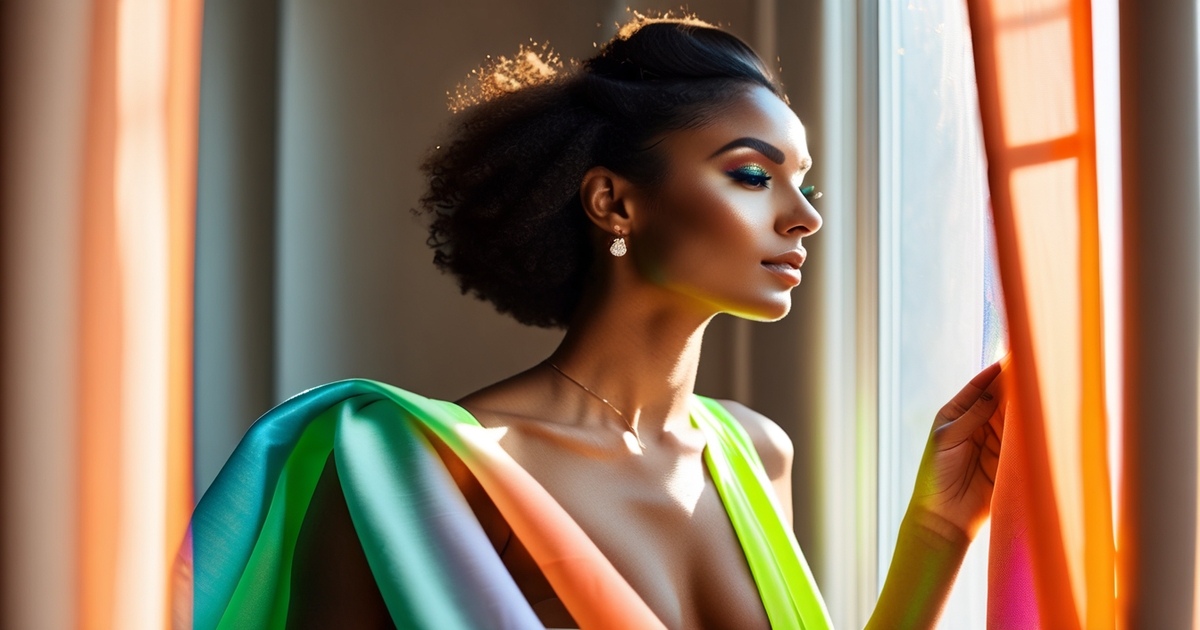
Color is a means, not a commandment. Olive skin possesses both warm and cool undertones in addition to a subdued green or yellow hue that transposes with varying light. Other hues battle that blend and can leave skin appearing fatigued, ashy, or too yellow-green.
Refer to the chart below to identify hues that commonly clash with olive undertones and find out how to try them on in reality.
1) Neon and icy pastels
Neon colors are shrill and abrasive on olive skin — emphasizing green and yellow undertones and sucking the depth from the face. Icy pastels—think powdery lavender, frosty mint, or baby blue with a chilly bite—tend to wash you out, leaving skin flat or ashy.
If it appears more radiant than your own skin's natural radiance in sunlight, it tends to dominate rather than accompany.
2) Cool pinks and bright oranges
Cool pinks with blue bases can make olive skin look gray, whereas hot or traffic-cone oranges can cancel blechy yellow or green. Rust, pumpkin and fire-engine orange seem 'warm', but on most olive shades they sallow the skin.
Pale peach/coral will often read ruddy – particularly around the cheeks, and might emphasize redness.
3) Stark whites and yellow-heavy neutrals
Crisp, optic white will leach the warmth from olive skin and leave an ashy cast. Yellow-based beige, khaki and mustard appear risk-free, but they bleach the skin and make any green or yellow undertones stand out.
Dull earthy browns with too much mustard yellow also makes olive complexions look tired, and soft, dusty tones can mute the natural brightness of vibrant olive skin.
4) Tricky greens and earth shades
Olive and most warm greens reflect the undertone in the skin, which can give the face a sallow quality. Yellows and muddy browns do this.
If you adore green, opt for balanced or deep cool greens instead of warm, yellow-leaning ones.
5) How to test before you buy
- Stand by a window in mid-day natural light. Indoor bulbs color skew. Daylight reveals the lie.
- Hold two items side by side: the test shade and a known good shade (for many, deep teal, true navy, or soft ivory). If your skin suddenly appears brighter next to the known good shade, the test shade could be off.
- Check for three signs: skin turns gray or ashy, looks too yellow/green, or redness pops.
- For makeup, swatch on jawline and allow to sit for 2-3 minutes. Foundations with strong yellow can fade. Blush in cool pink can look dead. Coral can become ruddy.
- Take a picture in daylight (no flash) to see color cast on your face and neck.
Makeup for olive colored skin
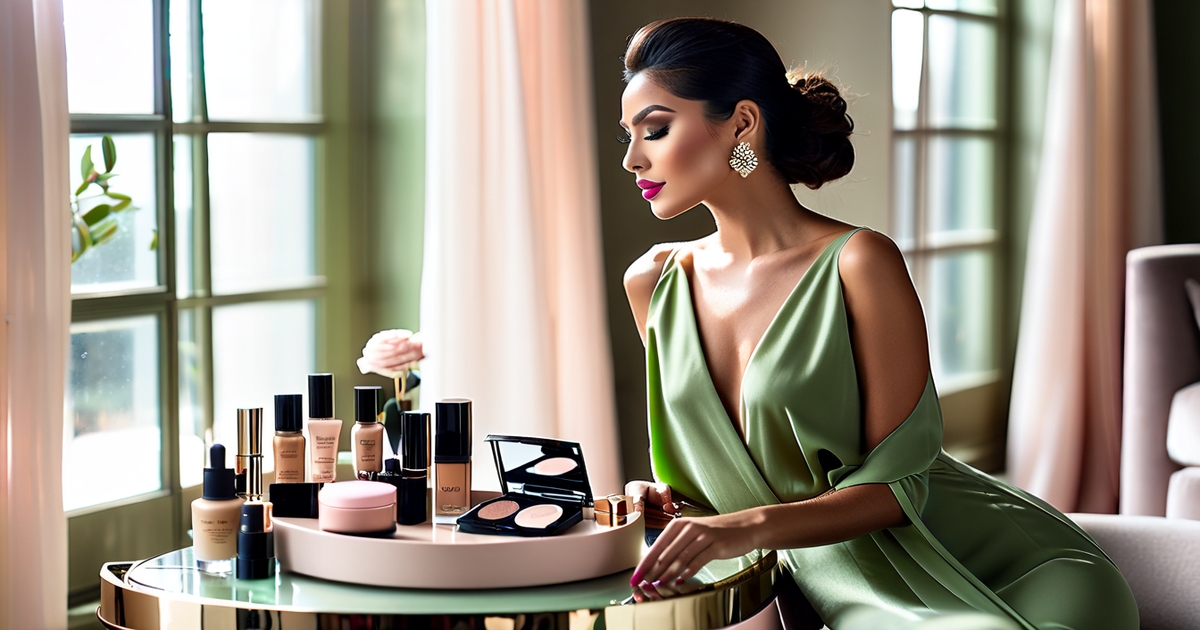
Olive skin tones possess yellow, golden, or neutral-green undertones that shift with the light and seasons. This unique skin tone can appear warm in the summer, slightly green or sallow in the winter, and range from light to deep. To complement this true olive skin tone complexion, we want to mirror that faint green glimmer while maintaining a bright and radiant face.
Foundation matching
Begin with companies that identify shades for olive skin tones, such as 'olive,' 'neutral olive,' or 'golden-olive.' This helps to avoid the usual pitfall where a shade dries pink, orange, or gray. Many lines continue to omit options for those with an olive complexion, so neutral or warm-golden shades can work if they lean slightly green rather than peach.
Try on jaw and neck in daylight by a window. Wait 10–15 minutes to see if it oxidizes or shifts in undertone. If the match turns pink or orange, go more neutral-olive; if it goes ashy, add warmth. A light coat of green-tint primer can tone down surface redness, without toning down the olive base.
Choose flexible textures that don't flatline the skin: satin or natural-matte for oilier zones, and radiant or luminous for dull days. For those with light olive skin tones, the green cast can sometimes appear stronger in winter, so a neutral-olive mix often looks most seamless.
Make sure to consider products like Estée Lauder Double Wear or MAC Studio Fix, which offer options suitable for olive skin tones, ensuring you find the right shades for your unique skin tone.
Blush and bronze
Muted rose, terracotta, warm berry and even peach can look fresh on olive skin; peach brings a healthy flush when the face turns sallow. Avoid hot pinks with heavy white bases.
Bronzers with golden or olive undertones are ideal. Stay away from heavy orange or brick red. A light hand keeps depth without mud. A gentle luminizer on the high points restores glow when skin appears sallow.
- Blush: dusty rose, terracotta rose, warm berry, toasted peach
- Bronzers: golden-olive tan, muted caramel, neutral-brown without red
- Try: cream textures for seamless blend; powder because it wears on
- Add: a sheer champagne highlighter to lift without frost
Lip color
Earthy reds, brick, berry and mauve flatter the olive base irrespective of hair color and depth. Pastel pinks and coral oranges tend to compete, but deeper plums or oxblood or a crisp blue-red look sharp and sophisticated.
A warm brown-nude with a dash of rose is great for daytime, while a brick red or ripe berry can ground the evenings. Pair with terracotta eyeshadow or natural, soil-toned bronzer to mimic warmth.
Go-to picks:
- Brick red, rust red, tomato red with blue lean
- Mulberry, blackberry, deep plum for bold nights
- Rose-mauve and brown-rose for nudes that don't wash you out
- Warm caramel nude for minimal days
Beyond the surface
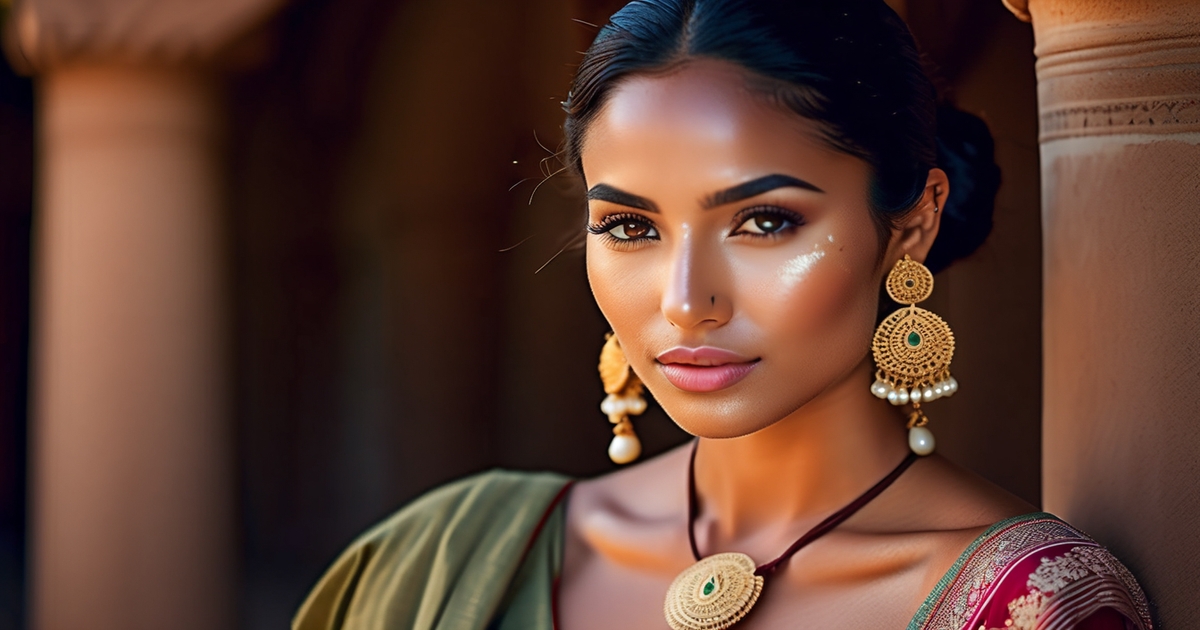
Olive skin tones occupy a nuanced zone: often medium but spanning light to dark, with a subtle greenish or yellowish cast that can read as neutral, warm, or cool undertones. While higher melanin provides some inherent UV protection, this unique skin tone is still prone to hyperpigmentation, necessitating a routine that balances protection, brightening, and barrier support.
Skincare needs
Hyperpigmentation is the primary curveball, especially for those with an olive complexion. Spots can arise post-breakout or after sun exposure, leading to dull patches that remain. Light exfoliation can help lift the veil without agitating additional melanin. Aim for mild chemical options 1–3 times a week: lactic acid for dry-prone skin, mandelic for sensitive types, or a low-dose BHA for oil-prone T-zones.
Pair with brighteners that play well with warm undertones: vitamin C (ascorbic acid or THD ascorbate), azelaic acid for both spots and redness, and niacinamide to steady pigment transfer. Sprinkle on tranexamic acid for those hard-to-eradicate marks.
Daily sunscreen is nonnegotiable. Even with additional melanin, olive skin still gets burnt and pigments. Use broad-spectrum SPF 30+ every day, reapply outdoors every 2–3 hours, and choose textures you will wear: lightweight gels, hybrid fluids, or tinted mineral formulas that avoid a gray cast. Hats and shade at noon provide extra coverage.
Establish a consistent schedule and adhere to it. Mornings: cleanse, antioxidant serum, moisturizer, SPF. Nights: cleanse, targeted serum for tone, moisturizer. Keep actives light to avoid irritation that can ignite fresh dark spots. If your skin undertone seems elusive—neutral olive can skew warm and cool—consider a pro skin consult to dial in formulas.
Cultural identity
Olive skin shows up across many roots: Mediterranean, Middle Eastern, South Asian, and Latinx lineages, and in communities far beyond those labels. It has narratives—immigration, weather, holiday traditions—and frequently informs our sense of individual identity in a larger humanity.
For others, it's an iron gate, black and bold, sturdy for all days. That ambiguity can feel liberating or disorienting. Both are true.
Celebration begins with reverential words of breadth and subtlety. Beauty standards expand when we consider olive to be a spectrum—not just one swatch—and when companies cater to actual shades rather than shoehorning into warm-only or cool-only categories. With inclusive shade maps, tested against undertones, identity shifts from guesswork to identification.
Media perception
Fashion and film continue to flip-flop between bronzing olive skin to appear "golden" or illuminating it so it renders gray. Advertising tends to file it under vanilla 'medium', shaving off the greenish tint that characterizes it.
Stereotypes show up as typecasting: the sultry neighbor, the ambiguous other, the sidekick. Underrepresentation reveals itself in shade gaps, weak undertone range, and a sparse hair–makeup reference library.
Change accelerates when we demand proper credits, inclusive lighting crews, and retouching that preserves natural skin color. Reverse campaigns that see olive skin in all age groups, genders, and regions, with transparent product shade names and undertone indicators.
Conclusion
Olive skin says a lot. Cool light of winter. Warm sun in the summer. Greens, rust, cobalt and cream tend to play nicely. Neon lime and chalk white can combat the glow! Soft gold highlights brighten up the face. Blue-red lipstick appears daring. Earth tones root a look on hectic days.
Through out there, undertone varies. Some are more golden. Some lean neutral. Some slant deep and cool. Little quizzes, assist. A clap on the jaw. A shirt to the face. Quick snap by the window.
Style ages with wear. Fads expire. Fit and feel conquer. Save what compliments. Release what numbs.
Have a tint or product in mind? Share it. Can I ask a quick q. Let's polish your mix.
Frequently Asked Questions
What is an olive skin tone?
Olive skin tones typically feature a naturally neutral-to-warm undertone with a slight green or gray cast. This unique skin tone often tans easily and seldom burns, making it present in various populations, from those with light olive skin tones to richer complexions.
How can I tell if I have olive undertones?
Check in daylight. If gold and silver jewelry both flatter you, and your veins appear blue-green, you could have an olive complexion. Foundations can go orange or pink on you—another sign of typical Mediterranean skin tones.
What colors look best on olive skin?
Rich jewel tones and earthy hues tend to flatter most olive skin tones. Test out emerald, teal, and cobalt to balance warmth and complement your natural glow, especially if you have a true olive skin tone complexion.
Which colors should I reconsider?
Neons, dusty pastels, and some yellows will wash out olive skin tones. Very cool grays and icy blues can appear flat against a true olive skin tone complexion. If a color mutes your skin tone, switch it out for a deeper or warmer shade.
What makeup works for olive-colored skin?
Opt for neutral or golden foundations with olive undertones to complement your unique skin tone. Apply peach or terracotta blush, bronze or copper eyeshadow, and brown or black eyeliner for a harmonious look.
How does olive skin change across the spectrum?
Light olive skin tones to deep olive complexions can benefit from brighter, warmer colors, while deeper olive skin tones glow beautifully in intense hues and luxurious metals like gold and bronze.
How can I care for olive skin beyond color choices?
Apply it daily, SPF 30+, even if you tan like a mutha. Choose light exfoliation to prevent dullness, especially for those with olive skin tones. Moisturize with a lightweight moisturizer and address hyperpigmentation with vitamin C + niacinamide.